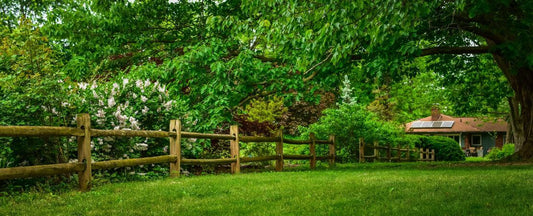Hellebore Planting and Care Guide

Planting Hellebores, One of the Earliest Flowers to Bloom
Helleborus, commonly known as hellebores, Lenten rose, and Christmas rose, are enchanting perennials that bring color and life in your winter to early spring garden, often blooming even when snow is still on the ground. These resilient and striking plants are a must-have for gardeners who appreciate the beauty and interest of blooming flowers during the cooler months. We'll provide detailed instructions for how to plant and care for hellebores.
Planting Hellebores
Choosing the Right Location: Hellebores grow in partial shade but can tolerate full sun in cooler, northern areas. Select a site that receives dappled sunlight or light shade for the majority of the day, ideally under deciduous trees or beside structures that provide afternoon shade.
Soil Preparation: Hellebores prefer fertile, well-drained yet moisture-retentive soil. Enhance your planting site by incorporating plenty of organic matter, such as compost or well-rotted manure, to improve soil fertility and drainage.
Planting Distance: Space hellebore plants 12 to 18 inches apart to allow for growth and air circulation. This spacing is crucial for preventing disease and encouraging healthy, robust plants.
Planting Depth: Set hellebore plants in the ground at the same depth they were in their pots, being careful not to bury them too deeply as this can hinder their growth.
Hellebore Maintenance
Mulching: Apply a year-round mulch of organic material to conserve soil moisture, keep the soil cool, and add nutrients. Mulch also helps suppress weeds and protect the roots in colder regions.
Watering: While hellebores are drought-tolerant once established, they perform best with consistent moisture. Water them during prolonged dry spells, especially in summer, to keep the soil evenly moist.
Feeding: Fertilize hellebores in early spring with a balanced, slow-release fertilizer to support their flowering and growth throughout the season.
Dividing Plants: Hellebores can be divided carefully if needed, though it's best to leave them undisturbed whenever possible. H. orientalis hybrids can be transplanted more readily, while other species prefer to remain in place. If division is necessary, do it in late summer or early autumn.
Pest Control: Slugs can be a problem for hellebores; use appropriate eco-friendly slug bait as needed to protect your plants.
Deadheading and Pruning: Remove old leaves in late winter to tidy the plant and make way for new growth and blooms. Deadhead spent flowers if you do not wish for the plants to self-seed.
Follow these planting and care tips to help your hellebore flowers thrive. Because of their early season blooms, they'll bring beauty and color to your garden when few other plants are in bloom. These shade-loving perennials are long-lived, a testament to the resilience of nature, and interesting to see in the garden during cooler months.



